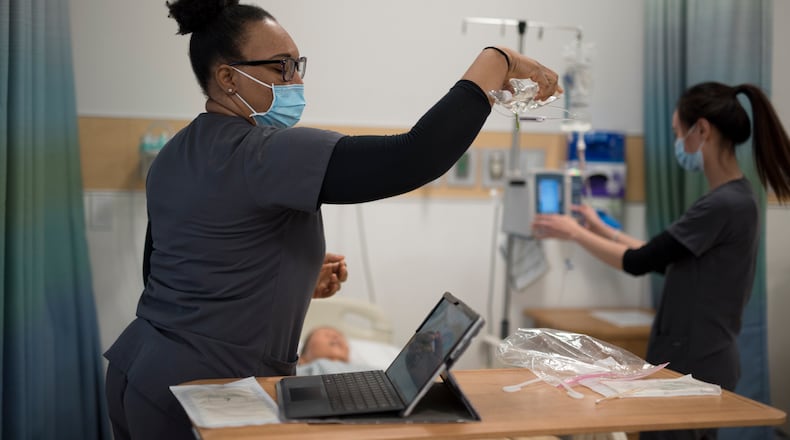According to the U.S. Bureau of Labor Statistics, employment of registered nurses is projected to grow 7% through 2029. In the Dayton region, there are approximately 14,000 nurses, Sinclair said, and noted currently, over 1,000 new nurses are needed annually across our region.
“Delivering high-quality nursing education is Sinclair’s expertise and by increasing the number of students in our Nursing Program, Sinclair is playing an integral role in filling the growing need for skilled workers on the frontlines of the COVID-19 global pandemic,” said Rena Sebor, dean of the Sinclair College Health Sciences Division.
Sebor said no additional funding or staffing was needed to expand the program.
Sarah Hackenbracht, president & CEO of the Greater Dayton Area Hospital Association, which represents most of the area’s hospitals, said there is a growing need for nurses in the area, particularly after the COVID-19 pandemic began.
As of 2020, the hospitals had about three times as many vacancies in staffing as they did in 2014, and the turnover rate was 1.5 times higher than in 2014. That data only includes short-term hospitals and doesn’t include places like doctor’s or long-term care facilities. That shortage has likely worsened due to COVID-19 stress.
“We hope that after a respite some nurses will choose to come back, but we have a regional challenge ahead of us to ensure all healthcare organizations have the nursing staff needed to care for patients,” Hackenbracht said.
Closing the gap means working with both healthcare and education to make careers in healthcare a top choice for future workers, she said.
Hackenbracht said addressing the nursing shortage would mean a variety of solutions, not just expanding the jobs pipeline.
“But certainly, the pandemic is exposing every opportunity that we need to take advantage of to try and strengthen the production of our healthcare workforce and growing the talent that we have here in this region,” she said.
About the Author



